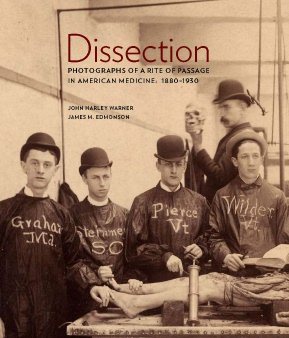iso in the world.
FLASH!
Ardi Talk on November 18!
"Human Evolution: The New Fossil Ardipithecus, a Foot on the Ground & a Hand in the Trees!"
An evening with the scientists who discovered and analyzed this exciting new fossil hominid
Wednesday, November 18, 2009
7 p.m. Cleveland Museum of Natural History Auditorium
The Institute for the Science of Origins is fortunate to have among its fellows, the scientists involved in the discovery and analysis of the most exciting new human ancestor since Lucy. Come hear about "Ardi" first hand!
Sponsored by the Institute for the Science of Origins
Free and Open to the Public!
ISO Fellows Discover Earliest-Known Skeleton of Human Ancestor
4.4 million year old Ardipithecus ramidus skeleton discovered and analysed by ISO researchers
ISO Fellows Yohannes Haile-Selassie, Bruce Latimer, Linda Spurlock, and Scott Simpson
Meet the Scientists! ISO Talk on campus by Researchers - Coming Soon!
Stay Tuned - Date & Location to be announced
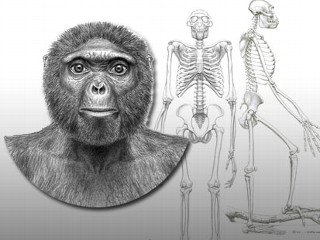
Yohannes Haile-Selassie, who found the fossil in Ethiopia, is curator of Physical Anthropology at the Cleveland Museum of Natural History. Spurlock is director of Human Health at CMNH. Haile-Selassie and Latimer are adjunct professors in the departments of anthropology, anatomy, and cognitive science at CWRU. Simpson is Associate Professor of Anatomy at CWRU's Medical School. All are fellows of the Institute for the Science of Origins.
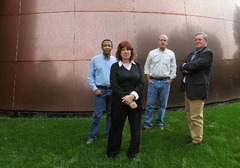
These ISO scientists are helping rewrite the book on human evolution. They contributed to 7 of the 11 papers published in the journal Science, in which researchers describe the oldest hominid skeleton discovered to date, a possible human ancestor in the midst of changing from climbing on all fours to walking upright. This hominid, named Ardipithecus ramidus, or Ardi for short, is truly intermediate between humans and their ape-like ancestors. But Ardi is far different from the modern chimpanzee, which so often has been used as a model of our forebears.
"It looks, in many ways, more like a modern human," said paleontologist Scott W. Simpson, a Research Fellow at the Institute for the Science of Origins. "It's completely different from what we predicted," said Simpson, a co-author of three of the papers. "This changes not only the way we think about human ancestors, but chimpanzees and monkeys, too." Humans, chimps and gorillas have an older, common ancestor still to be found, but this skeleton shows that chimpanzees and gorillas have evolved away from us over the past 5 million years, he said. "This is one of those quantum leaps in understanding."
Yohannes Haile-Selassie, Research Fellow at the Institute for the Science of Origins, discovered the skeleton in 1994. The fossilized bones were between two layers of volcanic ash in the Middle Awash study area, a site near the Awash River in Ethiopia. They include parts of a skull, pelvis, ribs, forearm and hand, lower leg and foot. "I knew it was an early hominid remain, but at that point, there was no way I could understand the impact it would have," Haile-Selassie said. Now, after 15 years of study, the find "is Amazing. It's going to open up a lot of discussions and new questions."
Studies of the bones show that Ardi had:
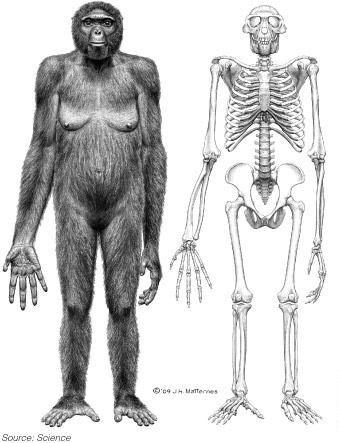
The information above was adapted from CWRU Press Coverage
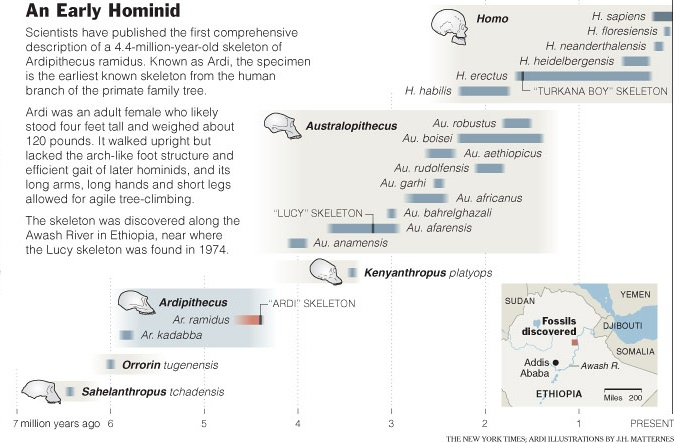
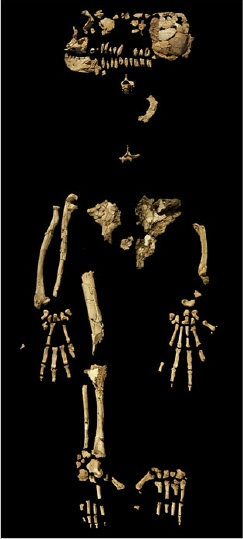
The Scientific Papers:
October 2, 2009
Ardipithecus ramidus
More than a dozen articles by various authors, Science
Selected Media Coverage:
October 1, 2009
Cleveland Museum Shares In Major New Discovery About Human Evolution
Interview with Yohannes Haile-Selassie and Bruce Latimer, by Gretchen Cuda, IdeaStream/WCPN
October 1, 2009
Fossil Skeleton From Africa Predates Lucy
By JOHN NOBLE WILFORD, New York Times
October 1, 2009
Oldest "Human" Skeleton Found--Disproves "Missing Link"
By Jamie Shreeve, National Geographic
October 2, 2009
Cleveland researchers say fossil find overturns thinking on human evolution
John Mangels, The Plain Dealer
October 2, 2009
Meet Ardi, a mother to all humanity
ANNE MCILROY, The Globe and Mail
October 2, 2009
"Ardi" Scientists Used LifeModeler's Software to Understand How Earliest Hominid Moved
Bruce V. Bigelow, Xconomy
Premiering October 11, 2009, 9 pm
Discovering Ardi
Exclusive TV Special, Discovery Channel
-------------------------------------More ISO Influence-
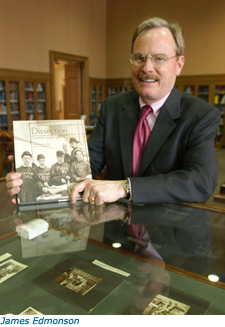
ISO Fellow James Edmonson examines the origins of a dead practice...and its descendants
Dissection: Photographs of a Rite of Passage in American Medicine, 1880-1930
New book published by Blast Books, co-authored by John Harley Warner and James Edmonson
New exhibit tours museums around the country. On campus April 3- May 24
Location: Allen Memorial Library (corner Euclid Ave and Adelbert Road)
James Edmonson, Ph.D., is chief curator of CWRU's Dittrick Medical History Center
Buy the Book! on Amazon.com
Selected Media Coverage:
April 23, 2009
Behind the Doors of Anatomy Class: Dissection is a rare photographic journey of medical students and their cadavers
By Susan Griffith, CWRU News Center
April 24, 2009
Gather 'Round the Cadaver A new book examines photographs of medical students posing with the bodies they dissected.
By Barron H. Lerner, Slate.com
April 25, 2009
Person or Specimen? Cadavers in the medical dissection lab
By Jessica Palmer, Bioephemera
April 26, 2009
Cadavers, camera, action! With the rise of photography, portraiture entered the medical-school dissecting room. Dissection: Photographs of a Rite of Passage in American Medicine, 1880-1930
New York Times Book Review, April 26, 2009, p.17
April 27, 2009
Case Western Reserve University's Allen Memorial Medical Library displays 'Haunting Images' from a century ago
by Brian Albrecht, Cleveland Plain Dealer
April 28, 2009
Snapshots From the Days of Bare-Hands Anatomy, review of Dissection: Photographs of a Rite of Passage in American Medicine, 1880-1930
by Abigail Zuger, M.D., New York Times / Health section
Inside Higher Ed, Feature Article
by Elizabeth Redden
Portraits Capture Life In Dissecting Class
interview of John Warner by Jacki Lyden, NPR All Things Considered
May 29, 2009
Listen Online: 'Dissection' Documents Med School Rite-Of-Passage
Download Podcast: 'Dissection' Podcast
interview with Jim Edmonson by Ira Flatow on NPR's Science Friday
